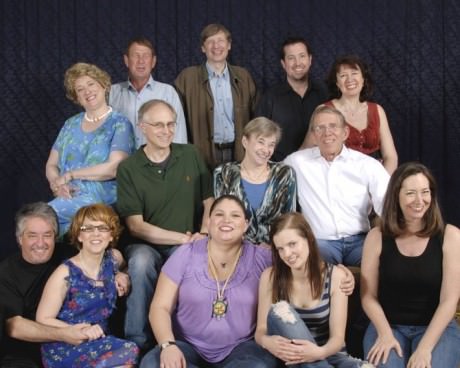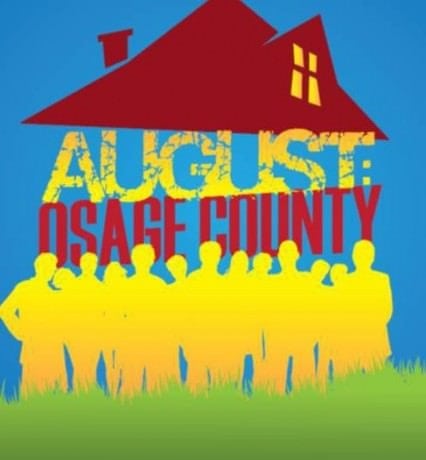In an article on the Steppenwolf Theater Company’s website, Tracy Letts writes that his play August: Osage County was inspired by the desire to create for the Steppenwolf ensemble a play that drew on the shared family history of Midwesterners whose parents and grandparents had lived through the Great Depression. The three-act, thirteen-character play he produced as a result won him the Tony, the Pulitzer and the Drama Desk Award for Outstanding Play for its exploration of what he calls “the politics of tribalism” (common, he notes, to theatrical ensembles as well as families). And indeed, although August: Osage County is without question a family drama, the group dynamic comes closer to Lord of the Flies than to Three Sisters.

In Reston Community Players’ outstanding production, the curtain rises on Beverly Weston (Mark Yeager), the family patriarch and “a world-class alcoholic,” delivering a meditation on suicidal poets to Johnna (the unflappable KJ Jacks), a young Cheyenne woman he hires to cook, clean, and watch over Violet, his drug-addicted wife. When Beverly disappears without explanation shortly thereafter, the Weston clan descends en masse: Vi’s sister Mattie Fae (the comically vulgar Gayle Nichols-Grimes), the three Weston daughters, and their various husbands, lovers, and hangers-on. Perky Karen (Marisa Johnson), the youngest, arrives from Miami freshly engaged, her aggressive newfound happiness hopelessly out of step with the family crisis. Fragile Ivy (Leta Hall), the only sister who stayed in Oklahoma, is brushed aside as useless by her mother; the bleak cynicism beneath her diffidence, and the sole ray of hope that leavens it, are one of the play‘s most surprising slow reveals. And Barbara (the superb Lee Slivka), the eldest, whose arrival is eagerly anticipated by Violet, makes her entrance determined to hold her mother to account for crimes past, present and future.
The cast, under the deft direction of Andrew JM Regeic, is uniformly excellent. Letts’ play gives each character his or her moment, and no one shirks either the broad comedy or the emotional heavy hitting the script calls for. Regeic keeps the pace up (the three and a half hours fly by), skillfully choreographs moments of chaos, and conveys the claustrophobia of an overcrowded house through his characters’ constant invasion of one another’s personal space. (Maggie Modig’s arresting set features a fractured roof and newspaper-covered windows tilted at unsteady angles, visually echoing the unstable dynamics of the family.)
But the centerpiece of the family, and the play, is unmistakably Violet (Mary Suib). Her motives, her lucidity, and the extent of her drug addiction are in constant, shifting question for both her daughters and the audience; she must be by turns vicious, affectionate, bewildered and libidinous. I had both read the play and seen a previous production, and still Suib kept me guessing. It dawns on the audience only gradually that Vi may not always be quite as confused as she appears, and her ability to snap out of a tear-stricken panic attack long enough to deliver a crisp slice of hell to her family members is both funny and terrifying. Suib gives Violet all her mercurial contradictions and ambiguities without ever being vague; the slur of her brain-damaged, pill-addicted speech never prevents us from hearing the story, and her Vi never forgets how to drop the act and command the room. As she lingers in the house, Barbara undergoes her own psychic deterioration, and Slivka mimics Suib’s symptoms so persuasively one believes they share the same genetic code. The convergence of their personalities climaxes in a scene with Ivy, who has come over to announce a major life decision, one neither Barb nor Vi is interested in hearing about. Johnna has made catfish for dinner (“Bottom feeders,” Barb says, “my favorite”) and, in a play about power and cruelty within a family, the fish becomes the catalyst for one of its most hilarious and brutal scenes.
The lighting, by Ken and Patti Crowley, is fluid and unobtrusive, and works well with Modig’s set to establish the rooms of the house, as well as a much-used imaginary television set and the arrival and departure of cars outside. The transition music (sound design by Rich Claar and Rich Bird), played on drums and wooden flute, sounds both vaguely Native American and dimly evocative of Ennio Morricone’s haunting score for The Good, the Bad and the Ugly: lawless and primitive, with a whiff of the exotic. Either would be an appropriate reference for the story of a house built over the bones of the ousted Native Americans (Johnna their lone, near-silent representative), and a family whose ghosts don’t ever seem to depart, but are birthed again with each generation.
August: Osage County completes its run tonight at 8 PM at Reston Community Players at The Reston Community Center’s CenterStage – 2310 Colts Neck Road, in Reston, VA. For tickets, purchase them online, or by calling the box office (703) 476-4500.
LINK
Article on writing August: Osage County by Tracy Letts.





